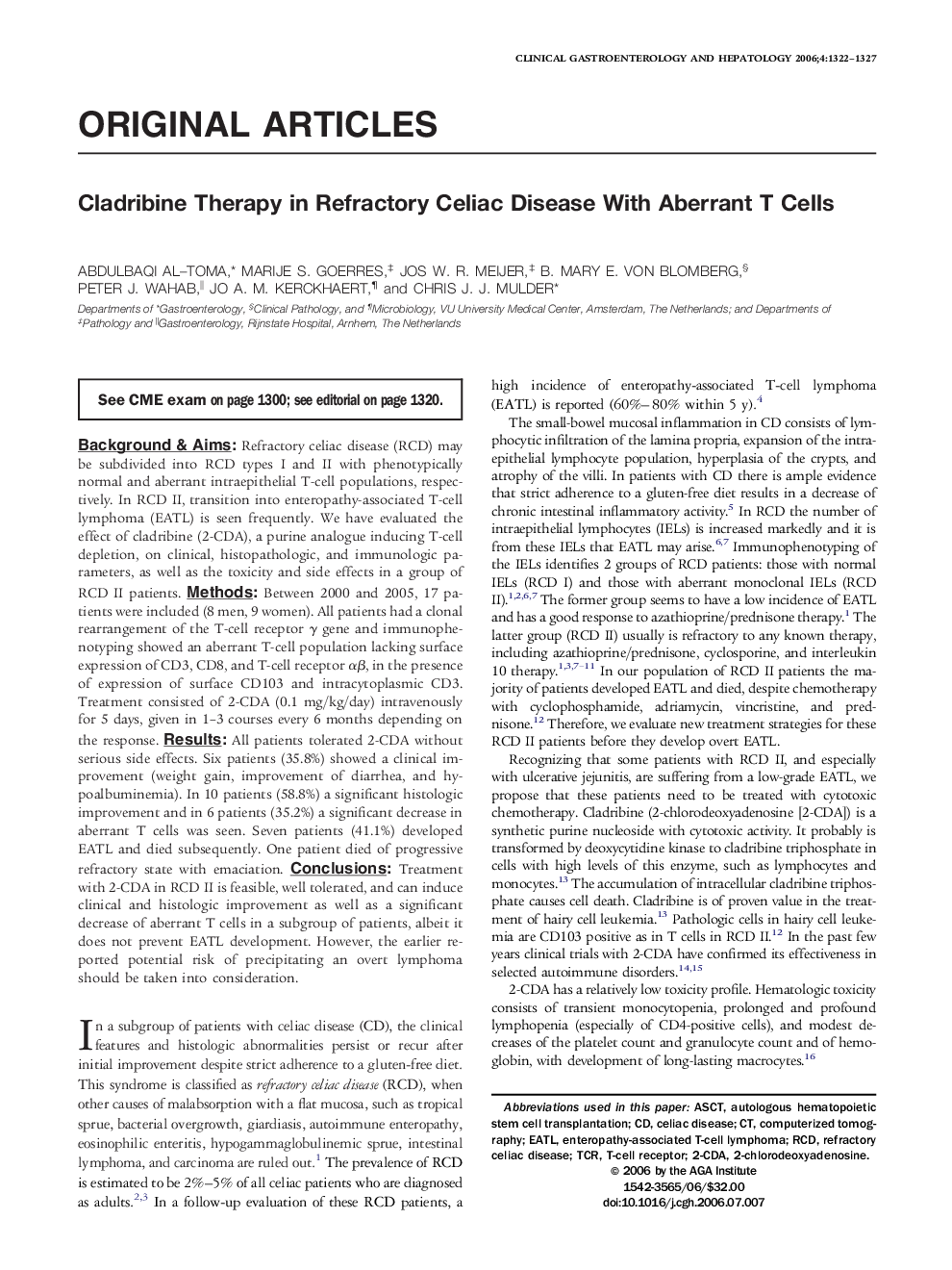| Article ID | Journal | Published Year | Pages | File Type |
|---|---|---|---|---|
| 3285724 | Clinical Gastroenterology and Hepatology | 2006 | 6 Pages |
Abstract
Background & Aims: Refractory celiac disease (RCD) may be subdivided into RCD types I and II with phenotypically normal and aberrant intraepithelial T-cell populations, respectively. In RCD II, transition into enteropathy-associated T-cell lymphoma (EATL) is seen frequently. We have evaluated the effect of cladribine (2-CDA), a purine analogue inducing T-cell depletion, on clinical, histopathologic, and immunologic parameters, as well as the toxicity and side effects in a group of RCD II patients. Methods: Between 2000 and 2005, 17 patients were included (8 men, 9 women). All patients had a clonal rearrangement of the T-cell receptor γ gene and immunophenotyping showed an aberrant T-cell population lacking surface expression of CD3, CD8, and T-cell receptor αβ, in the presence of expression of surface CD103 and intracytoplasmic CD3. Treatment consisted of 2-CDA (0.1 mg/kg/day) intravenously for 5 days, given in 1-3 courses every 6 months depending on the response. Results: All patients tolerated 2-CDA without serious side effects. Six patients (35.8%) showed a clinical improvement (weight gain, improvement of diarrhea, and hypoalbuminemia). In 10 patients (58.8%) a significant histologic improvement and in 6 patients (35.2%) a significant decrease in aberrant T cells was seen. Seven patients (41.1%) developed EATL and died subsequently. One patient died of progressive refractory state with emaciation. Conclusions: Treatment with 2-CDA in RCD II is feasible, well tolerated, and can induce clinical and histologic improvement as well as a significant decrease of aberrant T cells in a subgroup of patients, albeit it does not prevent EATL development. However, the earlier reported potential risk of precipitating an overt lymphoma should be taken into consideration.
Keywords
Related Topics
Health Sciences
Medicine and Dentistry
Gastroenterology
Authors
Abdulbaqi Al-toma, Marije S. Goerres, Jos W.R. Meijer, B. Mary E. von Blomberg, Peter J. Wahab, Jo A.M. Kerckhaert, Chris J.J. Mulder,
